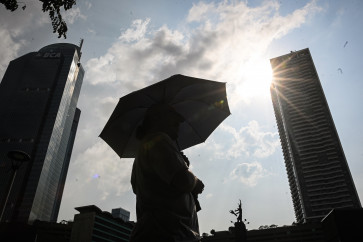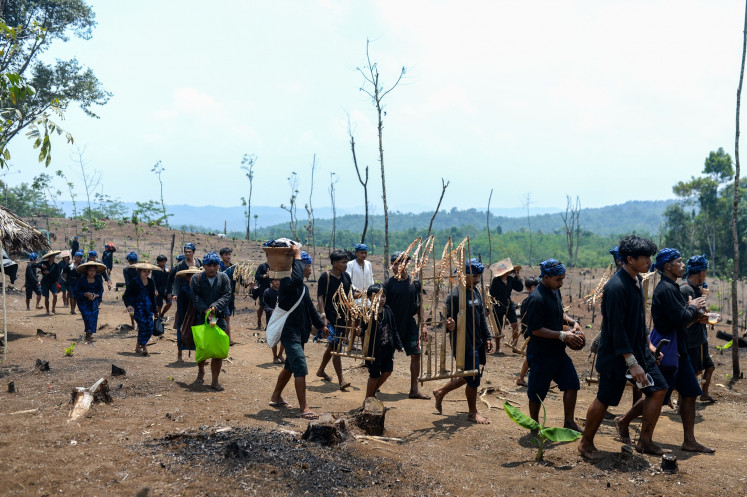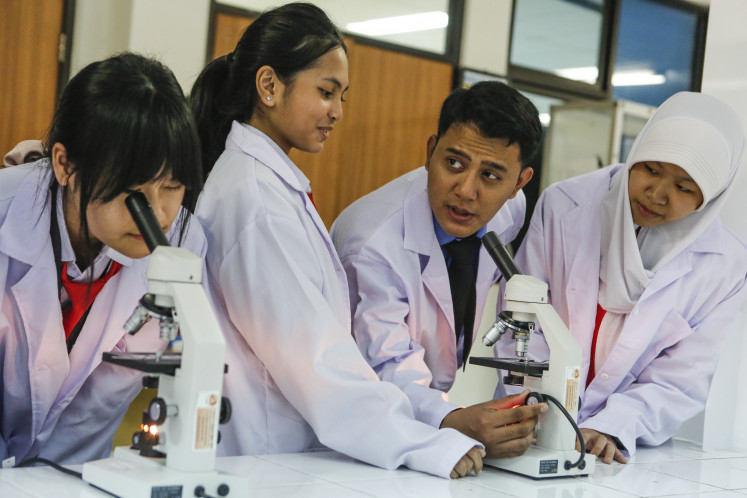Popular Reads
Top Results
Can't find what you're looking for?
View all search resultsPopular Reads
Top Results
Can't find what you're looking for?
View all search resultsBiodiverse Papua: Ecotourism potential largely untapped
With its vast biodiversity and cultural richness, Papua’s ecotourism potential should be utilized to increase the quality of Papua’s social and natural environment, the World Wide Fund for Nature (WWF) has said
Change text size
Gift Premium Articles
to Anyone
W
ith its vast biodiversity and cultural richness, Papua’s ecotourism potential should be utilized to increase the quality of Papua’s social and natural environment, the World Wide Fund for Nature (WWF) has said.
During the book launch of Land of the Birds of Paradise, the author Marc Argeloo said that the potential for bird watching activities and ecotourism in Papua was huge, but it had not been supported by adequate infrastructure.
“With its current situation, it is very difficult to provide facilities for ecotourism. The potential is there, but the infrastructure is not,” Argeloo said during a press conference recently.
According to Argeloo, between 1998 and 2010 there were 1,171 new species discovered in the forests, wetlands and waters of New Guinea, of which a substantial number were found in Papua.
Of those discovered, about half of the findings are invertebrates such as insects, with 294 plants, 81 fish, 157 amphibians, 45 reptiles, 12 mammals and two bird species added to New Guinea’s rich biodiversity.
Argeloo said in his book that among the champions of Papua’s biodiversity were the birds of paradise; of the 42 species recorded living in New Guinea, 29 are only found in Papua.
However, he said that people should not be rushed into the idea of providing facilities for activities such as ecotourism or bird watching.
“Time is essential. If you don’t take time, you will ignore the entire population in Tanah Papua,” Argeloo told The Jakarta Post on the sideline of the book launch, citing that with a population of 2.8 million, there were approximately 256 ethnic groups in Papua.
“The kids grew up with tourists and Jakartans, they are constantly smiling, but if you take a look at the eyes of old people, you see only sorrow. There was a constant battle between their old traditions and the new environment,” Argeloo said.
“A good sustainable development costs time,” he added.
WWF CEO Efransyah said that balance between utilizing the potential and protecting natural resources was also essential.
“Papua represents the most ideal ecosystem in the world. We have seen massive deforestation in Kalimantan and Sumatra. The WWF message is clear that in Papua, we have to do the best we can to utilize its natural resources with sustainable development, before it is too late,” Efransyah said.
“The locals are very traditional and dependent on their natural surroundings, therefore the sustainability of natural resources is very important,” he added.
The book launch coincided with the 50th anniversary of WWF in Indonesia and the 30th anniversary of WWF in Papua. The main challenge to the conservation efforts in Papua is to preserve as well as to make use of its natural resources.
Argeloo’s book, which features the conservation aspect plus colorful photos, is not for commercial purposes. Instead, it will be distributed to schools, regional administrations and conservation groups for free. (nad)










